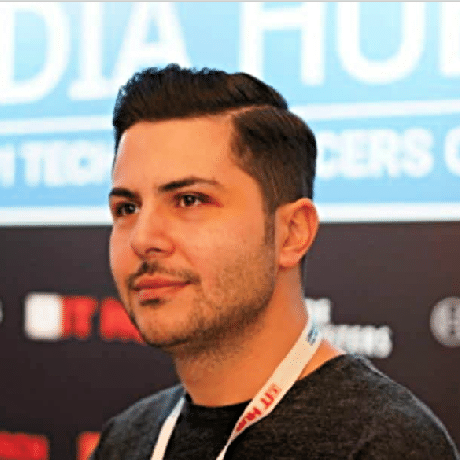Speakers 2020

Andrew Lombardi

Andrew Lombardi
Andrew Lombardi is a veteran entrepreneur and software developer. His parents taught him to code while barely able to read on an Apple ][ he still wishes he had. He invented Nutella and the Internet (suck it Al Gore) while drinking straight coffee and staring off into space. He’s been running the consulting firm Mystic Coders for 22 years, authored a kick-ass book on Spring for Apress and WebSocket for O’Reilly, coding, speaking internationally and offering technical guidance to companies as large as Walmart and companies with problems as interesting as helicopter simulation. He firmly believes that the best thing he’s done so far, is being a great dad.

Wajdi Ben Rabah

Wajdi Ben Rabah
Wajdi is a computer engineer wizard, specializing in mobile technologies and parallel realities. He has published articles around these subjects in multiple blogs and magazines.
He is also a speaker at many international events. His main goal is to push the digital world forward via contributions on open source projects or via training sessions and workshops.
And just to top off his professional experience, he has worked with multiple companies like Orange, Sfeir, Twitter and many others, as a mobile team leader (with an experience in other fields like devops and web).
Wajdi is a renowned speaker presented at conferences like: Google DevFest, Appdevcon, Appbuilders, AndroidMakers/DroidCon, CodeMonsters, Mixit, etc.
He is also a bestselling author.
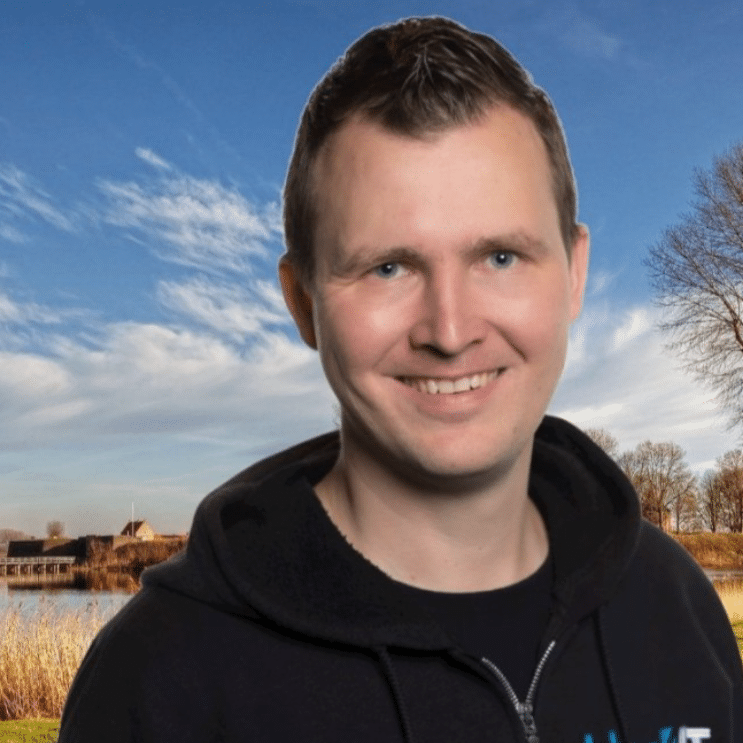
Ko Turk
Blue4IT
Ko Turk
Hi my name is Ko Turk and I am a Senior Java / Kotlin Developer at Blue4IT. I am working as a Fullstack engineer at the Rabobank, creating features in Kotlin and doing some Typescript ;).
As a speaker I like talking at international conferences and JUGs about Micrometer / Kafka and Kotlin! Best seen talk?! All talks with live coding in it! So that’s the reason that I’m trying and doing it more often! 😉
I hope you can appreciate! If you have some questions, don’t hesitate to contact me through Twitter (@KoTurk77).
Own your Software by using Micrometer and Spring Boot [LIVE CODING]
Imagine that you’re part of a (car) race team. You’re the one behind the screens to control the race and make some tough decisions (like changing the team’s strategy). But you don’t have the insights (or metrics) about your car, opponents, or even the weather. Sounds painful right? But why are we making this mistake when building our software? Why don’t we own our software by adding those insights (or metrics) by default?
SLFf4J logging is one side of the story, but we also need to know our application health. That’s where Micrometer comes in! It’s a library that you can use to define your own custom metrics, like:
- timers (to check the performance of your microservices)
- counters (to check how many times a certain event is occurring)
- gauges (to check the current value of a variable)
- and many more
These metrics are exposed by REST endpoints (JSON) together with Spring Boot actuator, which can be saved into a database like Prometheus or Graphite. And to visualize the data you can use a tool like Grafana. Pretty interesting right? In the demo (live coding!) I will show you how to create such applications using Micrometer, and Spring Boot.
Ready to win this race with me? Jump in!

Vladislav Mihov

Vladislav Mihov
Vladislav Mihov is a Full-stack Python Developer and Web Designer.
Currently, he is freelancing for clients and helping startups with the development of a MVP.
Vladislav is a student at New Bulgarian University with two combined bachelor’s degrees – Computer Science and Business Management. He is also a student representative in the Student Council at the same university.
His work experience started with a Python developer position for the world’s leading provider of lithography systems but then he continued working with different teams, brainstorming and iterating on ideas across a wide range of industries, among which are artificial intelligence, robotics, and web3.
Vladislav also loves bringing people together, he founded some online-based communities centered around help, networking, and enablement. Regarding human-related aspects, he believes in non-profit social enterprises too and that they can have a positive impact.
Vladi has been fighting spinal muscular atrophy which is a devastating disease that affects a person’s physical abilities but he does not let his disability bring him down.
In his spare time, Vladislav expands his network, does public speaking, writes content and reads.

Alexander Schwartz
Red Hat
Alexander Schwartz
Alexander Schwartz is a Principal Software Engineer at Red Hat. He helps organizations and teams to make architecture decisions that match their needs. To build their software in a maintainable way, he empowers them with best practices, tools and libraries. He leads by example to adopt true agile processes and to stay curious. Ideas spark when sharing thoughts with others. Finding out if an idea works requires experimenting with code and UX. Measurable results of the experiment show if the idea worked out, and might lead to new experiments.
Writing docs in your IDE – an AsciiDoc primer
Follow the documentation-as-code approach: Write documentation in your IDE, collaborate with other developers and writers using version control and let a continuous integration server scrutinize and publish your docs.
AsciiDoc is a lightweight markup language that translates for example to HTML and PDF. In a development environment, an IDE plugin provides editor support and preview pane.
Participants work in small groups using a web-based collaborative editor or their local IDEs. With small katas they will learn how to format text, structure documents, use images and embed diagrams. The workshop closes with a Q&A session to share best practices that participants can apply to their projects.
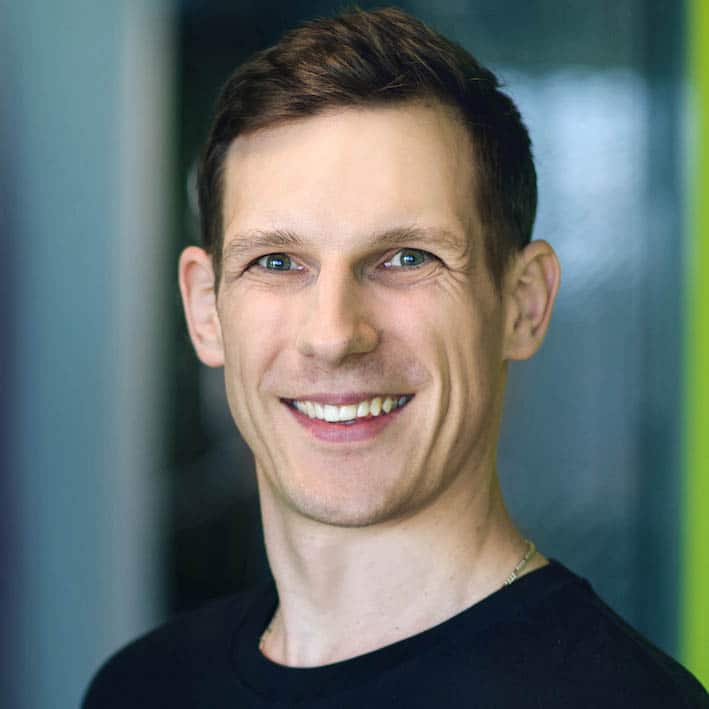
Radoslaw Szulgo
Dynatrace
Radoslaw Szulgo
Radoslaw is a Senior Product Manager for Dynatrace Managed with more than 12 years of experience in APM and observability domain as a software developer and leader. He’s an Agile product development enthusiast who is always happy to help those in need. Outside of work, Radoslaw as an ex-handball player, loves sport activities and is passionate about self-development.
Design for GitOps: What have we learned from Everything-as-code at scale?
Learn about Everything-as-Code approach from our experience to enable effective and successful collaboration between hundreds of engineers by GitOps approach. In this session, I on-board you to “as-code” and GitOps practices and I share how have we married them to build “infrastructure-“, “observability-” and “permissions-“ as-code services. I will give you tips on how the system should be designed to help you start with GitOps quickly.
What’s Everything-as-Code?
Everything as Code is the practice of treating all parts of the system as code. This means, storing properties of your system along with its source code in a repository such as git. When we additionally apply GitOps practices – we get a single-click automation backed by review, dry-run workflow and auditing for free!
How have we applied GitOps in our company?
In Dynatrace, more than 1000 devs across multiple locations and timezones collaborate every day. Automation is key to support fast-paced innovation. We’ve started from a hackathon to build first version of project Monaco (aka MONitoring As COde) – where we essentially automate observability as code. Then, we realized we can apply same approach to any area – for instance by “permissions-as-code”, anyone and anytime can elevate their permission to access new services by submitting just a pull request.
How can I start with GitOps?
The most important enabler for GitOps is proper RESTful API. We’ll go through most important guidelines on how API should be structured. Then, I will teach you how a basic GitOps workflow looks like. Finally, based on open-source project Monaco, we’ll learn that applying a state from the repository can be easily achievable.
I’m sure that after this session many of you will be inspired that your team and maybe even users of your platform can unleash unprecedented power of automation and effectiveness.

Alexander Reelsen
Elastic
Alexander Reelsen
Alexander Reelsen is a Developer, Advocate and Dad, works since 2013 distributed at Elastic, is interested in search, scale, JVM, crystallang, serverless and Basketball.
Running and monitoring a low maintenance Java web application
Have you ever organized a conference? Attendees, speakers, visitors and organizers expect a website along the conference.
What started as a built vs. buy decision, ended pretty quickly on the build side, despite having only a few weeks until the conference starts up. How customized should it be? What features are needed? In this talk we will start with an empty application, evaluating technology backend choices like Java, Javalin, Pac4j and templating languages, then go to planning the functionalities like not storing any login information as well as feature planning up to running in production. Do we really need a SQL data store or can we use the existing API for the session submission? We will cover downtime free rollouts as well as integration of APM to figure out issues while running the application.
Of course we will cover the holy grail: the possibilities of a halfway decent frontend for backend developers.

Kalina Hristova
Endava
Kalina Hristova
Kalina is an aspiring HR professional with BA in Business Management and Organizational Psychology. She has devoted their educational and professional career to the discovery of the practices that help professionals of all seniorities develop their full potential. She is currently part of the Recruitment Team in Endava Bulgaria, learning from experts in the IT field, and has worked on developing and applying effective practices for proactive talent acquisition. In addition, Kalina has also worked on and managed the internal internship programs at Endava.
Discussion :: Career Tips & Tricks

Irina Marudina
DXC Technology
Irina Marudina
Irina Marudina (@imarudina) is a software architect at DXC Technology with 20+ years of professional experience. Her project portfolio includes configurable product lines, web portals and information systems aiming zero coding effort during new client onboarding, Identity Management and Single-Sign On modules, scalable Akka Actor systems for graph data processing. Irina is a regular visitor on IT conferences and likes learning in her free time. She enjoys mentoring young developers on their way to mastery, teaching them to care for code quality and clean design.
Discussion :: Java Security – Lessons Learned and Challenges
Discussion :: Tools & Platforms – How to Select the Best for Your Needs?
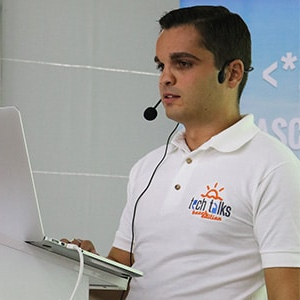
Sam Aleksov
EPAM Systems
Sam Aleksov
Engineering software over the last two decades, endeavouring into fresh entrepreneurial ideas involving novel virtual production approaches, UAVs and IoT. Sam Aleksov shares his experience from working and doing research for industry leading companies, pioneering and combining new technologies. Born in Bulgaria in 1989, Sam first began programming on his Olivetti 286S and after his family moved to Milan Italy, he continued his computer science education in a specialised high school, tinkering with flip-flops, logic gates, Zilog Z80s, primitive graphics programming with Turbo Pascal; to later enroll into the University Of Milan – Bicocca and follow with self teaching and certifying himself in computer graphics and classical mechanics.
Beginning his first entrepreneurial achievements in the early days of Android, he managed to reach a user base of 3 million and publish several successful mobile applications. Sam began his corporate career at WideSide Sagl, consulting and making impact on clients the caliber of Reply, Altran, Intesa SanPaolo, Vodafone, Allianz, Marazzi (Mohawk Industries) and FCA.
2016 marked a special year for him as he decided to move back to Bulgaria and join EPAM Systems, a company he’s currently engaged with and where he managed to apply all of his previous knowledge and experience some of his best clients so far. From mobile development for US-based start-ups and edge software architectures to breakthrough computer graphics stacks with DreamWorks Animation. In his free time Sams hobby is to program his UAVs, upgrade and evolve his virtual production sets and 3D printers. As somebody who grew up in Italy, his heart stays with supercars and the raw bond they provide while taking software, hardware and mechanics to the limits.
Sharing your GPU
So far we’ve gone to great lengths about virtualising all of our computers’ resources, except the GPU. After building my own cloud infrastructure a couple of years ago and dealing with different GPU pass-through approaches, recently, with all the hardware shortages and crazy GPU pricing, I decided it was time to tackle this problem once again, so it’s time that I share my findings.
There’s something in this talk for everybody, AI researchers, Gamers, Software Developers, DevOps, Entrepreneurs, etc…

Stephen Fluin
Chainlink Labs
Stephen Fluin
Stephen is Head of Developer Relations for Chainlink. Stephen works to solve real world problems faced by developers and businesses, and to represent the needs of the community.
With 20 years in the Software Development industry, Stephen has served as an executive technologist, consultant, and entrepreneur in several organizations.
Stephen applies deep technical knowledge and business accumen to accelerate software development. As an avid fan of wearables and the decentralized internet, he frequently collaborates with businesses and developers in the community.
Welcome to Blockchain for Developers
Blockchains provide a shared execution environment for a new type of development. Smart contracts form immutable digital agreements. Learn about how you can use your development skills to build a shared truth with blockchains and oracles.

Laura Bell
SafeStack Academy
Laura Bell
With over twenty years of experience in software development and information security, Laura Bell specialises in bringing security into organisations of every shape and size.
The team with 30 million players: Reducing software vulnerability at a global scale
Facing a global pandemic has been (and continues to be) an incredibly challenging period. There are very few people who have not seen dramatic impacts on their lives as a result.
While we as humans have been facing this struggle, a similar problem has been emerging in our software development community. Not only are we finding more vulnerabilities in our software than ever, but those weaknesses have been affecting a larger proportion of our software ecosystem.Are there lessons we can take from the last few years and the changes we have made to protect people from a pandemic and apply them to our software ecosystem? I believe there are.
In this talk, we will look at how the relationships between software projects improve our world whilst also making us vulnerable. We will do this by diving into the structures between codebases and looking at how these affect the risk faced by our people, data, and systems.
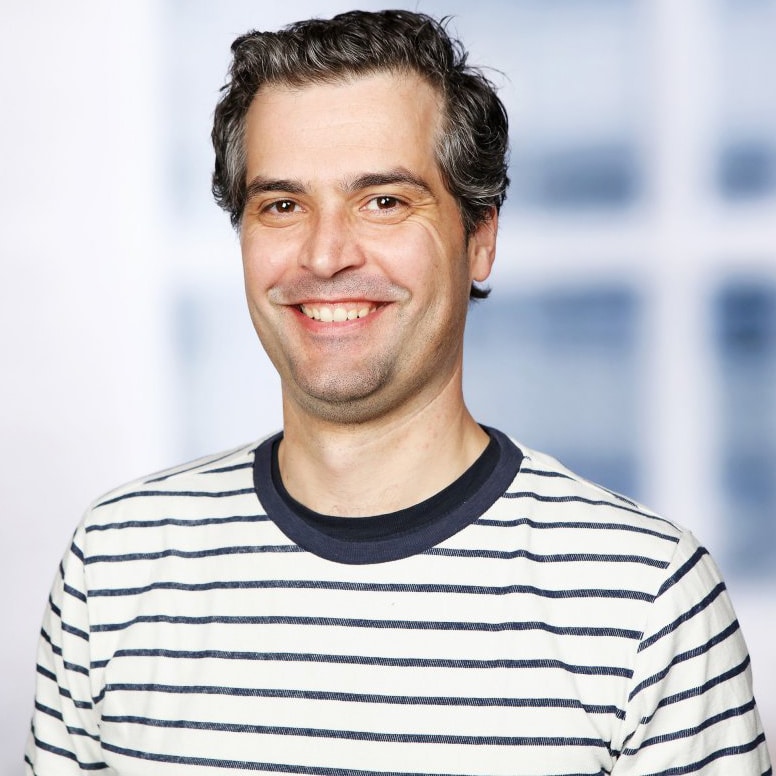
Paulo Lopes
Red Hat
Paulo Lopes
I’m Paulo, and I’ve used my 15+ years of software development experience to write secure distributed system and open-source libraries for many industries. In the last 7 years, I work as core developer on open source reactive systems libraries that power high-performance systems and frameworks you may use daily. I’ve implemented one of the first FIDO2 conformant open-source libraries for the JVM and am a true believer and advocate for the use of strong security standards on the JVM.
FIDO2/Webauthn: Replace passwords with strong phishing free security
The end of password-based authentication is near. Weak passwords are the cause of endless security breaches, and the constant reuse of the same password across different accounts is what keeps the clock ticking for the next breach to happen.
The FIDO2 standard aims to replace passwords entirely, and there is a good deal of chance that it will succeed. It has gained significant momentum in the past couple of years, as all major browser and operating system vendors fully jumped on board.
This talk will provide a deep dive of the FIDO2 and W3C WebAuthn standards, with the main focus on how to quickly implement it on any application using open-source FIDO Alliance conformant libraries.
Best practices, including security token lifecycle management, will also be covered.

Taner Ilyazov
Delta Source
Taner Ilyazov
Software engineer working at Delta Source. I’m passionate about Microservices, DevOps and Mentoring. I’ve worked mostly on high performance data-intensive applications and I’m currently more interested in Event-Driven architectures. In my free time I try to answer the question “How does this actually work?” or dabble in new technologies to further expand my horizons and relay the important parts to my team.
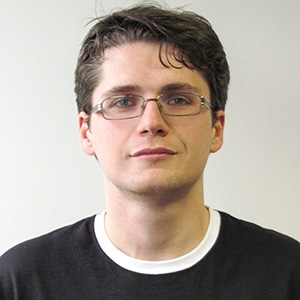
Petyo Dimitrov
Musala Soft
Petyo Dimitrov
Petyo Dimitrov is a software engineer with 15+ years of working experience in various projects for international clients. Currently, he is a Senior Software Architect at Musala Soft. His professional focus is in Java, Enterprise Application and Integration technologies, RESTful Services, Microservice Architectures and DevOps. He also enjoys sharing his experience and new technologies he is learning with colleagues at work, students at Technical University – Sofia and on different IT conferences in Bulgaria.
Java Code Doctor
A small unfortunate Java source code snippet is rushed to the emergency room with a multitude of symptoms (code duplication, complex logic, hidden bugs). Together we will diagnose it and attempt to gradually refactor it back to health.
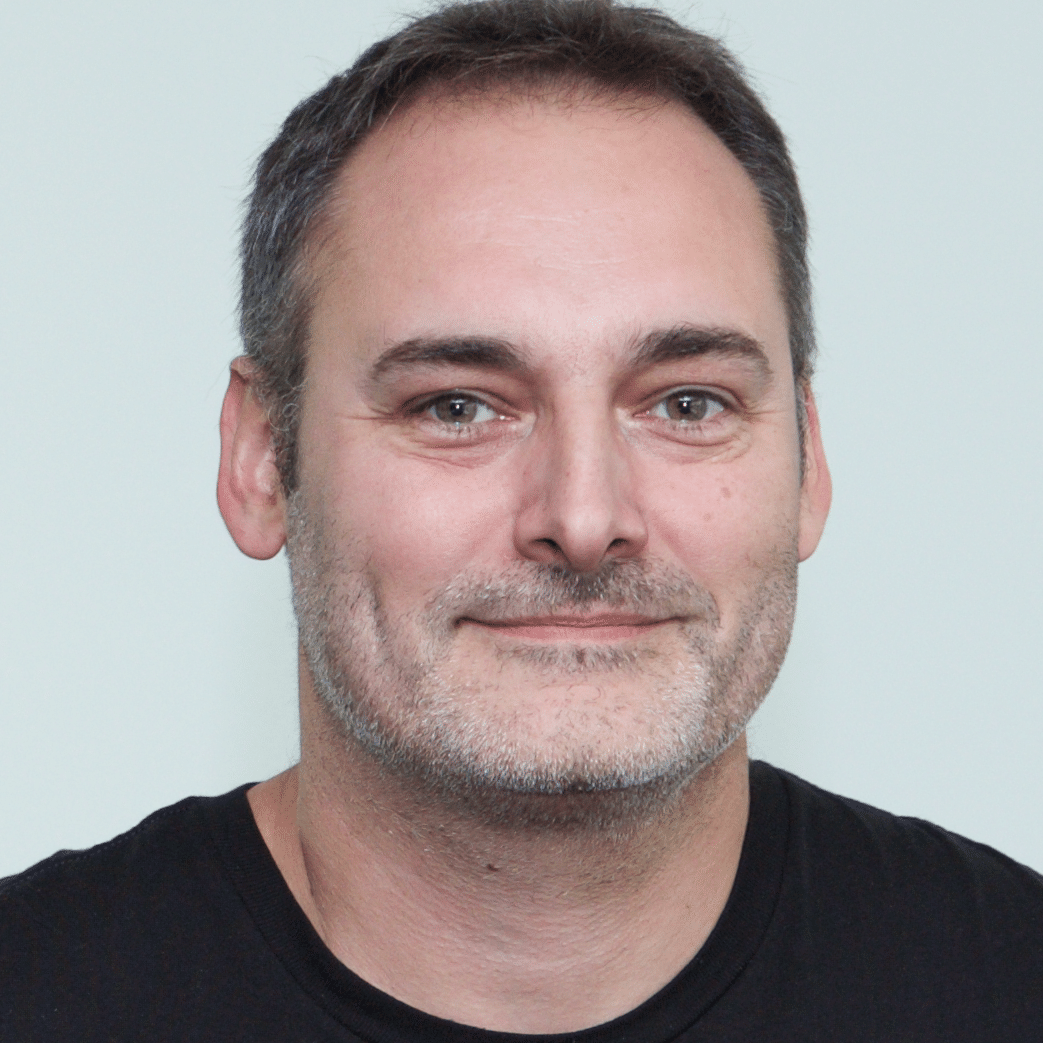
David Pilato
Elastic
David Pilato
David Pilato is Developer and Evangelist at elastic and French spoken language User Group creator. In his free time, he likes talking about elasticsearch in conferences or in companies ([Brown Bag Lunches AKA BBLs](https://www.elastic.co/blog/free-lunch-for-open-source-engineers)).
Advanced (elastic)search for your legacy application
How do you mix SQL and NoSQL worlds without starting a messy revolution?
This live coding talk will show you how to add Elasticsearch to your legacy application without changing all your current development habits. Your application will have suddenly have advanced search features, all without the need to write complex SQL code!
David will start from a Spring Boot/MySQL based application and will add a complete integration of Elasticsearch, all live from the stage during his presentation.
Indexing your office documents with Elastic stack and FSCrawler
You have plenty of Open Office, Microsoft Office, PDF, images… documents and you may want to be able to search for their metadata and content. How can you do that?
In this talk, David will explain how Apache Tika can be used for that and how to combine this fantastic library with Elastic Stack:
* Elasticsearch [ingest-attachment plugin](https://www.elastic.co/guide/en/elasticsearch/plugins/current/ingest-attachment.html)
* [FSCrawler](https://github.com/dadoonet/fscrawler)
* [Workplace Search](https://www.elastic.co/workplace-search) connector for FSCrawler to have a ready to use and powerful user interface for your documents.
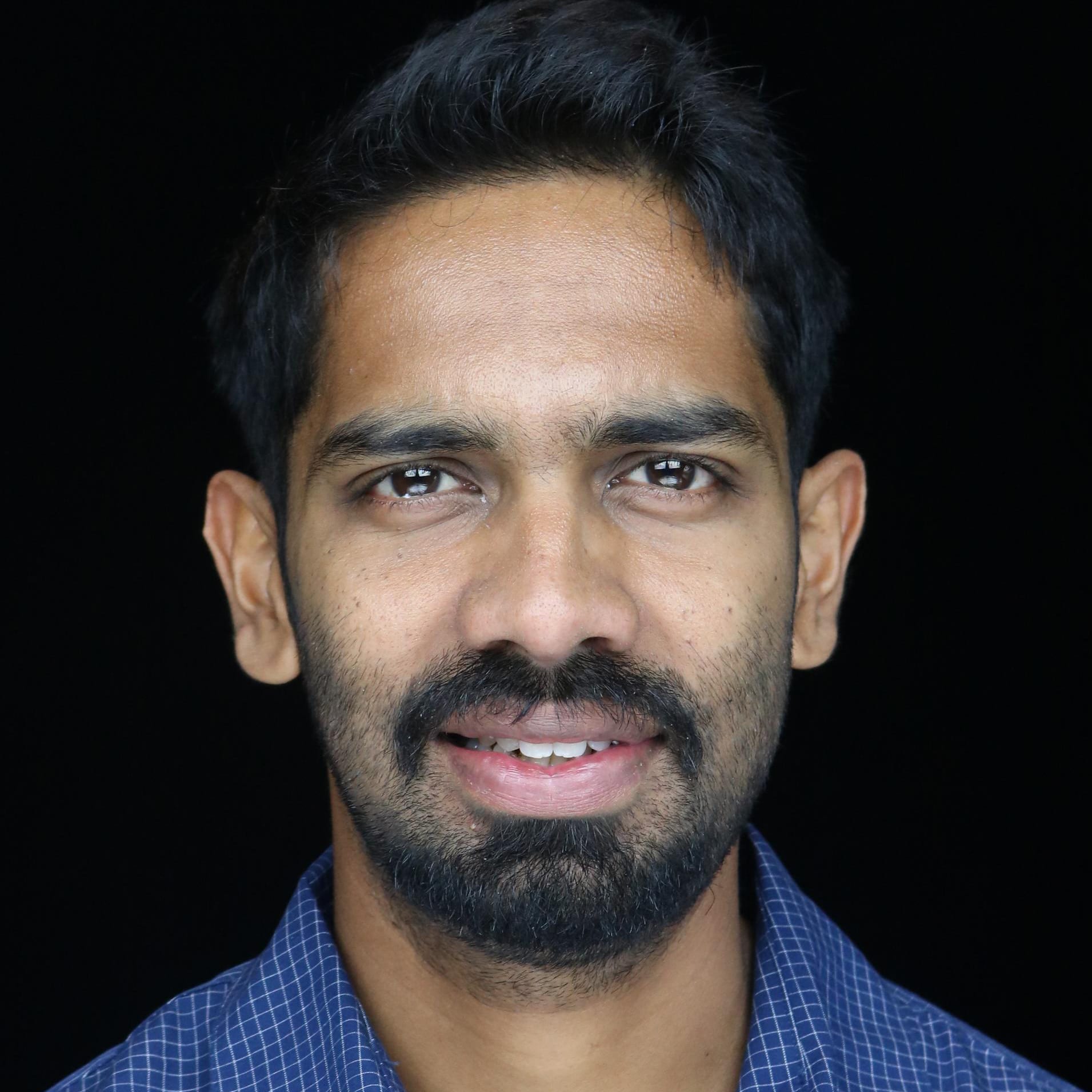
Sohan Maheshwar
Amazon Web Services
Sohan Maheshwar
Sohan is a Developer Advocate based out of Amsterdam, Netherlands. He is deeply passionate about emerging technologies and how it is shaping the world around us. He frequently works with developers in startups, ISVs, and enterprises on their cloud strategy. He previously worked as an Alexa Evangelist at Amazon, and has been in the developer relations space since 2013.
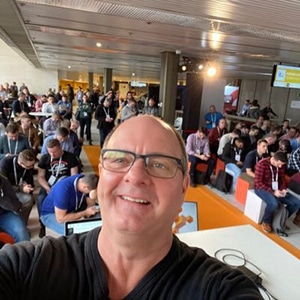
Brian Benz
Microsoft
Brian Benz
Brian is a Java Champion and a Cloud Advocate at Microsoft, helping developers get the most out of Java on Azure. Before Joining Microsoft, he was a program manager, evangelist, solution architect, consultant, developer, and author at IBM, Deloitte, and other companies. Find him on Twitter @bbenz.
DevOps for Java Shops
DevOps is great, if you have the people, processes and tools to support it. In this session I’ll highlight the easiest ways for Java developers to work with their IT organizations and partners to deliver their code to the cloud, including the best ways to reliably make updates and maintain production cloud code. The focus is on real-world examples using Linux command line tools, open source tools including Jenkins, and other free SDKs and tools available on GitHub. The examples, tools and demos that I show are applicable to any cloud platform, and all are available on GitHub. I will show Microsoft Azure running the samples but will not be selling azure – this is a technical talk that will focus on the code.

Anisha Malde
Amazon
Anisha Malde
Taking your Android Apps & Games to Desktop with Amazon Appstore
Amazon Appstore is bringing your Android apps to Windows 11! The Windows Subsystem for Android enables your Windows 11 device to run Android apps and games that are available in the Amazon Appstore. Join us as we explore how you can use Windows Subsystem for Android to develop, test and debug your apps & games. We will also dive into how you can optimize your apps & games for Windows via Amazon features and tailored UX/UI improvements for desktop.
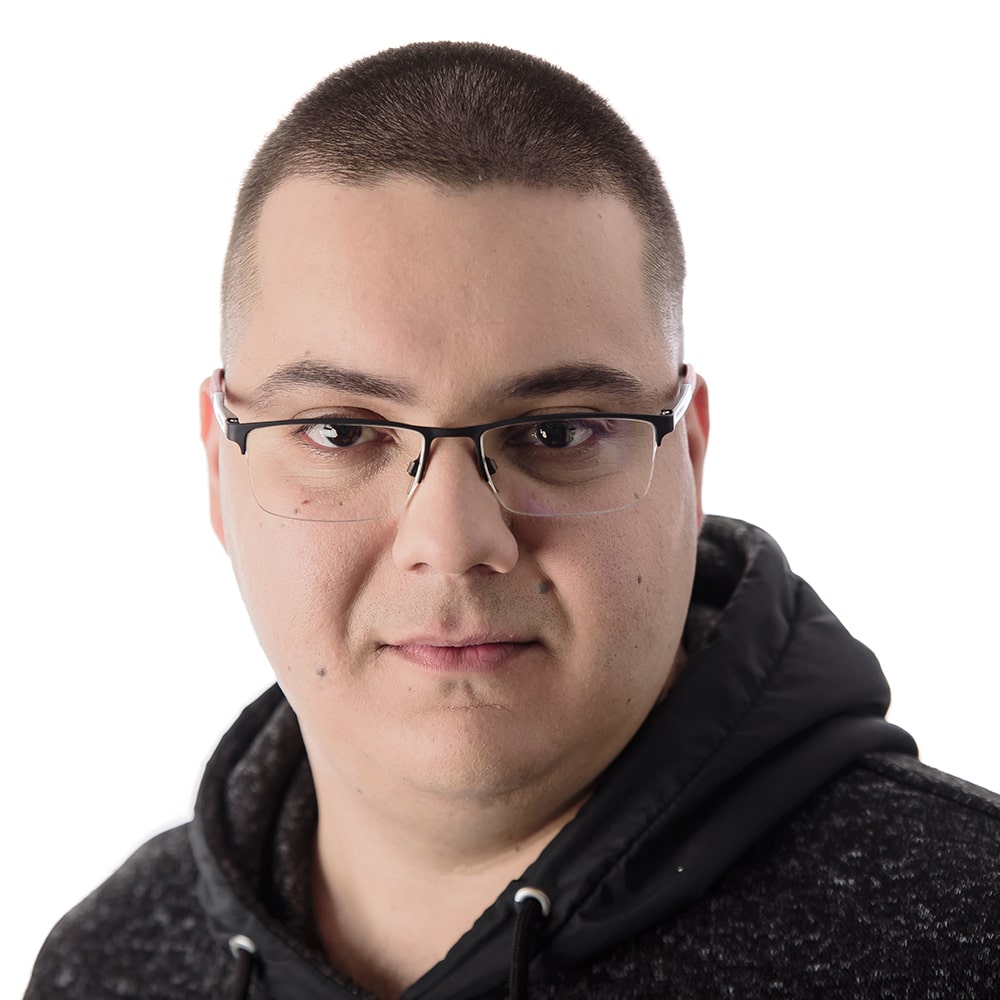
Nikolay Angelov
Nexo
Nikolay Angelov
I am a blockchain developer, public speaker and blogger. As a self-taught coder and enthusiast for all newly brewing tech. Began programming in 2007 when I wrote my first mIRC script, and has since mastered multiple programming technologies.
Recently participated in creating blockchain solutions for big companies and has multiple mainnet projects running. At present, I am an integral part of the development team at Nexo – a leading digital finance institution. Lectured and led workshops at various blockchain conferences, reaching thousands of attendees each year, in addition to teaching blockchain courses in Singapore and the Philippines.
Solidity Design Patterns
Тhe proven go-to solution for many common programming scenarios are the design patterns.
Not only generic and easy to extend but swift to tweak for your needs.
We will focus on some of the most useful Solidity Design patterns — knowledge that will truly come in handy when writing smart contracts for your dashing DApp.
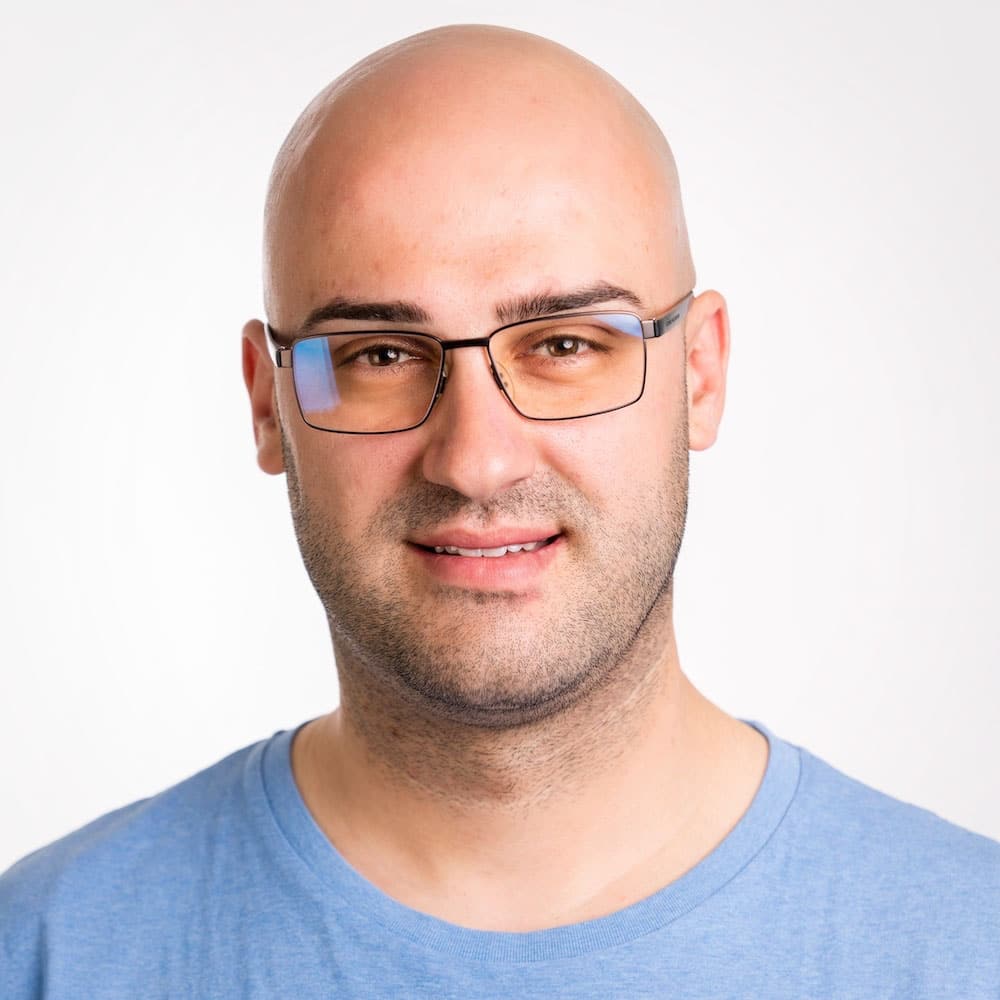
Yasen Yankov
Nexo
Yasen Yankov
Yasen Yankov has over 15 years experience in software development in the fintech industry. Prior to joining Nexo, he was Head of Engineering in a global fintech company and led over 20 teams in the Crypto & Consumer Digital Wallets division. Yasen is VP of Product Development @ Nexo, leading the institutional trading products as well as managing both engineering, product & infrastructure teams. Co founder of MindHub, an innovative programming academy for kids.
Designing a Crypto Trading Engine Based on Microservices and Event-Driven Architecture
- Crypto Trading Engine — The What’s, the Why’s and the How’s
- Divide & Conquer: How microservices and the single responsibility principle solves the business complexity problem one task at a time
- Orchestrate 70+ applications conundrum in a fault-tolerant microservice environment
- Design asynchronous event driven pipelines with eventual consistency in mind (15k+ msg/s)
Opening

Joris Mertens
IBM
Joris Mertens
Joris Mertens works as Developer Advocate for IBM Z at IBM, working for the global IBM Z Ecosystem team.
His mission is getting students and young professionals engaged with the IBM Z technology, as well as helping users and clients adapt modernization patterns on the platform.
By demonstrating live coding examples and hosting workshops and hackathons, his main objective is to provide hands-on experience towards his audience.
The Mainframe in today’s world – modern coding on IBM Z
Mainframe technology, nowadays called IBM Z, is more relevant than ever in today’s IT infrastructure. You probably make use of it on a daily basis without knowing it. During this session You will learn what mainframe technology is, how it is being used and how it integrates in a (Hybrid) Cloud environment. We will discuss how development on a mainframe is being done using the same modern tooling like any other platform and how you can start learning it yourself.

Svetlana Doneva
Amadeus
Svetlana Doneva
My name is Svetlana. I am sSenior QA Automation Engineer in Amadeus. I have been working mostly on Java based projects. I am very passionate about mentoring and back end automation. I love traveling abroad, dogs and meeting new peoples and cultures.
Design and Implementation of Rest Assured Automation Framework
- Java 1.8 JDK
- Gradle
- Data Factory Pattern Understanding
- DTO and Marshall objects
- Factories
- Steps – Implementation of actual hits of POST.GET.PUT,PATCH verbs in terms of REST and RESTful services
- TestNG – Annotations
- Reporting – Allure
- CI/CD – Jenkins Pipeline
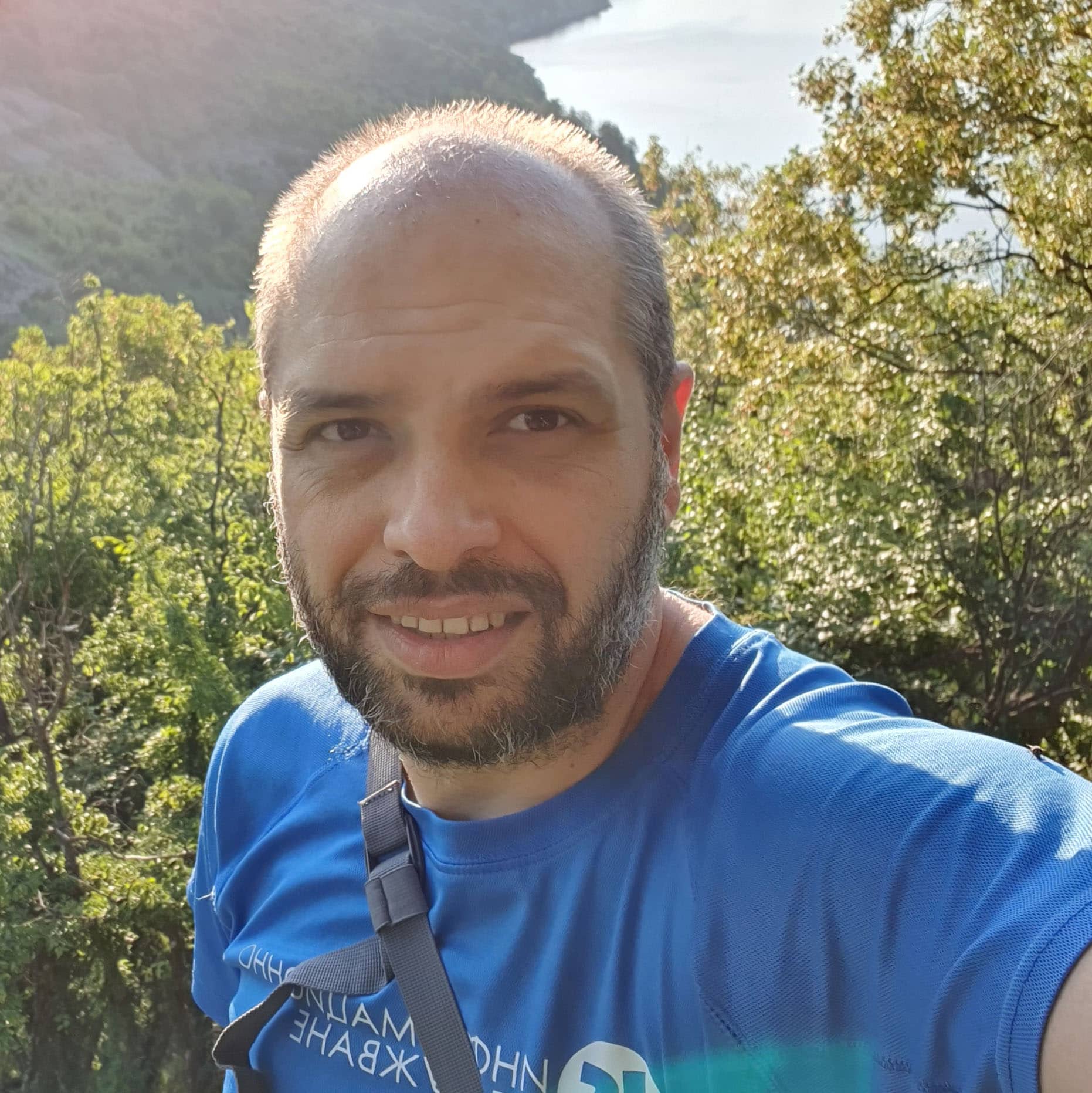
Stamo Petkov
Information Services JSC
Stamo Petkov
My name is Stamo Petkov and I’m head of Microsoft Technology department in Information Services JSC. I have more than 20 years of experience in the field of information technology and а strong passion for learning and sharing knowledge with my students in SoftUni or other professionals at different conferences all over the world. I am а Senior Software Architect, especially keen on designing multitechnology, scalable web applications. I have the opportunity to be part of the team responsible for the creation of some of the most significant information systems in Bulgaria such as the National Health Information System and Unified Information System of Bulgarian Courts of Justice. I love to travel and meet different people and to spend my free time on water or in the mountains.
Utilizing gRPC – an efficient communication mechanism for distributed applications
gRPC is a modern, high-performance framework that evolves the age-old remote procedure call (RPC) protocol. In cloud-native applications, we often work across programming languages, frameworks, and technologies. This interoperability complicates message contracts and requires great effort for establishing efficient cross-platform communication. gRPC provides a “uniform horizontal layer” that abstracts these concerns. Developers code in their native platform focused on business functionality, while gRPC handles communication unification.
In this session I will give you an overview of the gRPC, why and when to use it and why we have chosen it for mission critical applications. You will find out the benefits and drawbacks of this solution and in the end we will have a glimpse of what the future of gRPC will look like.

Nikolay Stoitsev
Halo DX
Nikolay Stoitsev
Nikolay Stoitsev is an engineering manager at the early-stage HealthTech startup Halo DX. He is leading a team that is reimagining the software systems for medical diagnosis to improve human health and well-being. Nikolay has an obsession with building great teams and software products. He was previously at Uber, VMware, and different startups.
Discussion :: New Positions in Software Development Industry
Discussion :: Tools & Platforms – How to Select the Best for Your Needs?
Discussion :: Career Tips & Tricks
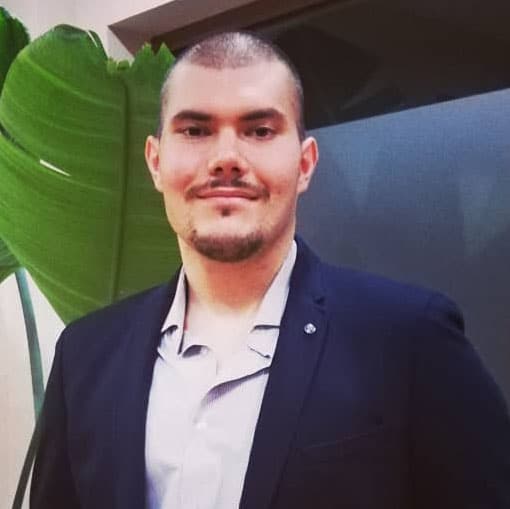
Ivo Nikolov
Information Services JSC
Ivo Nikolov
My name is Ivo and I am a Java Software Engineer at Information Services JSC. I started my education and professional career in the world of commerce but after a quick programming basics course I became excited about coding. Ever since then I have put in great effort and diligence (and sleepless nights) in every aspect of the learning process. Since my programming journey began, I have worked with Java, JS, Angular, Vue and GraphTalk. I consider myself a software developer who gives his best in every opportunity , as not only do I enhance my skills and knowledge ,but I feel pleased that I have done everything I can to produce an effective and efficient product. I don’t shy away from any challenge. In the long term my ambitions are continuously getting bigger and bigger. I always do my best so that my work and effort can truly make a positive change to other people’s lives.
Discussion :: Tools & Platforms – How to Select the Best for Your Needs?
Discussion :: Career Tips & Tricks
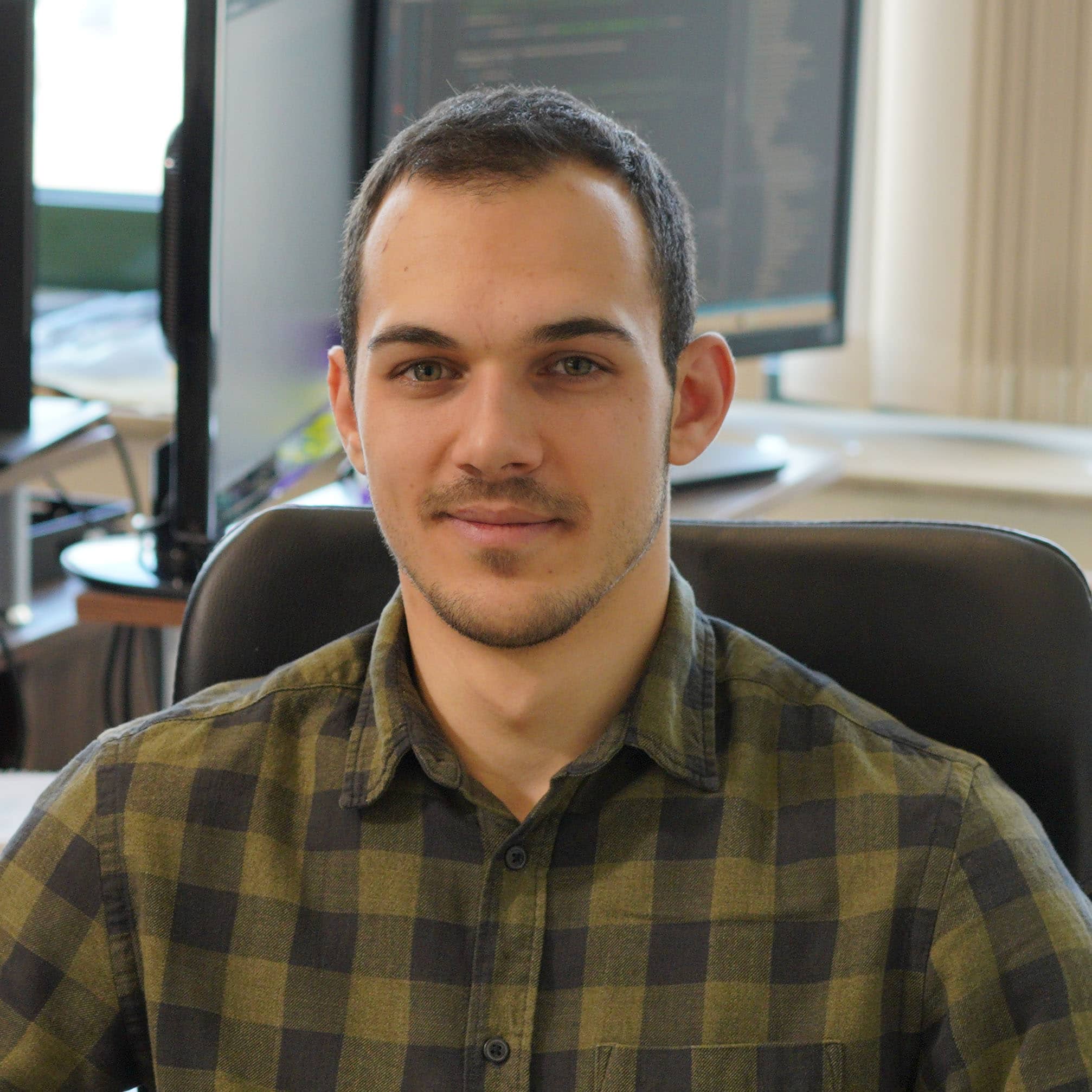
Hristo Hristov
TSD
Hristo Hristov
Hristo Hristov is a Lead Application Developer at TSD Software. Highly ambitious and progressive in his work, he is a full-stack developer with vast experience in C#, Angular, and React.
Hristo is particularly interested in emerging technologies. Being into dynamic and challenging projects, he has recently started diving into game development with the Unity Engine.
Outside of his software development duties, Hristo dedicates his free time to sports such as table tennis and street fitness, and he also loves to explore nature and read tech books.
Hristo Hristov was recognized as “Developer on Focus 2019” by DevStyler.
Optimizing performance with parallelism & asynchrony in C#
We will explore the differences between CPU-bound and IO-bound work as well as how both could be optimized. Starting with a quick theoretical introduction, we will then move on to code examples and benchmarks on both parallel and asynchronous challenges. We will see when we should vs. should not parallelize specific tasks. We will look at some best practices for exception handling and avoiding memory leaks when programming concurrently. Finally, we will briefly cover what libraries .NET provide us with to simplify our data processing.

Simon Ritter
Azul
Simon Ritter
A well-respected presenter, highly experienced in delivering content on a broad spectrum of technologies using innovative demonstrations. Building on extensive in-depth technical knowledge, capable of engaging with all levels of technical audience from developers to executive management and press. I am looking for a role that will continue to build on my developer-focused skills whilst providing new challenges.

Boris Kostadinov
Information Services JSC
Boris Kostadinov
I have an insatiable passion for creating great and worthwhile software – the more complex and challenging it is, the better. In pursuing this passion, I’ve acquired numerous skills and deep knowledge in every area of the software development industry. I am experienced in managing products and teams in heterogeneous environments, designing and implementing processes, steering stakeholders towards short and long-term goals, handling clients and their expectations, and much more.
Using Product Approach for Successful Software Solutions
In this session, we will journey through planning and executing the creation of a software product from the lenses of a solutions architect or a technical lead. We will explore the main characteristics of a software product. We will look at the differences between software as a product and a project. We will learn to plan and design our solution’s architecture to make it flexible, extendible, and maintainable. We will see what architectural features to focus on and which pitfalls to avoid. And finally, we will discuss how to best use product roadmaps for optimal results and successful execution.
This session is intended for software and solutions architects, development leads, technical project managers, and curious product managers who want to see the process from a technical perspective.
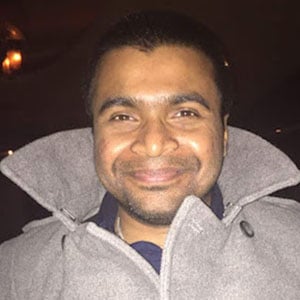
Mani Sarkar

Mani Sarkar
Mani is a Senior Polyglot Programmer, Data, ML Engineer | Java Champion | Crafter | Startups | AI/ML/DL | Speaker | Blogger
He is strengthening teams & making them accelerate using technologies at hand, while working as a polyglot software developer. Mani is also working closely with founders, CTOs, tech & research teams, building & delivering working and maintainable software & tooling.
He has over 15 years of experience as a software developer following software development principles & methodologies like BDD and TDD when writing code. Mani is strongly advocating software craftsmanship principles and practices wherever possible and applicable.
In addition to performing his role he also perform DevOps tasks, write tools i.e. for AI/ML research teams, perform Data & ML engineering tasks.
Mani has strong interests in AI, Machine Learning, Data and Data Visualisation, Graal/GraalVM/Truffle, Application & JVM Performance Tuning and Benchmarking.
In his free time, he’s constantly learning at conferences, events and workshops to gather practical hands-on experience. Being an active member of various developer communities, and participating in various F/OSS projects.
Discussion :: Java Plans for 2022 and Beyond
Discussion :: Java Security – Lessons Learned and Challenges
Discussion :: Tools & Platforms – How to Select the Best for Your Needs?
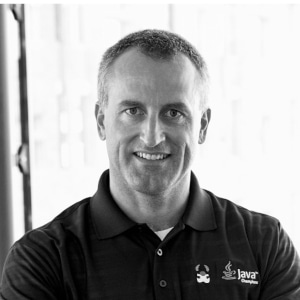
Ivar Grimstad

Ivar Grimstad
Ivar Grimstad is the Jakarta EE Developer Advocate at Eclipse Foundation. He is a Java Champion and JUG Leader based in Sweden.
Besides advocating the Jakarta EE technologies, Ivar is contributing to the Jakarta EE specifications as well as being the PMC Lead for Eclipse Enterprise for Java (EE4J). He is also one of the specification leads for Jakarta MVC and represents Eclipse Foundation in the JCP Executive Committee.
Ivar is also involved in MicroProfile, Apache NetBeans, and a wide range of other open-source projects and communities. He is a frequent speaker at International developer conferences.
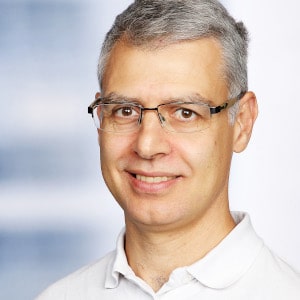
Nicolas Frankel

Nicolas Frankel
Developer Advocate with 15+ years experience consulting for many different customers, in a wide range of contexts (such as telecoms, banking, insurances, large retail and public sector). Usually working on Java/Java EE and Spring technologies, but with focused interests like Rich Internet Applications, Testing, CI/CD and DevOps. Also double as a trainer and triples as a book author.

Vili Mileva Yankova
Scalefocus
Vili Mileva Yankova
Vili is a British/Swedish-educated professional with degrees in Politics, Psychology and Computer Science and more than 10 years of strong business administrative and organizational experience in multicultural environment.
She is passionate about Project management and Organizational development.
The Spotify model: The ultimate beginner’s guide
The Spotify model is an innovative agile approach, which focuses on scale and emphasizes on the importance of culture, network, people engagement and contribution. It helps organizations to increase their innovation approach, communication, accountability and quality. The model successfully combines technology and culture. We’re going to talk about squads, tribes, chapters, guild and alliances without going back to ancient times.
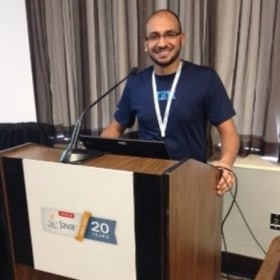
Ahmad Gohar
IBM
Ahmad Gohar
Ahmad Gohar is an Executive Technical Specialist, a Sr. Software Architect, People Manager, Microservices – Java & Web Development Services Area Lead at IBM. He has been building and leading developer solutions/communities for 13+ years at several companies. Subject Matter Expert (SME) for Java/Web/Blockchain technologies. Furthermore, Gohar is a Java Community Process (JCP) Member. Gohar has deep expertise in leading cross-functional teams to develop and execute strategy. He has long been a frequent speaker at universities, JUGs, events, and conferences worldwide.
Moreover, Gohar holds M.SC in Software Engineering from Egypt, also MIBA in Global Business Management from ESLSCA France. He is IBM Certified Thought Leader Technical Specialist, OpenGroup Master Solution Architect, OpenGroup TOGAF 9.1 L2 Certified. Also, he is certified as OCEJPA, OCPWCD, OCPJP, OCPSQL/PL, OCASQL/PL, MCP. Gohar Won 2014/2016 Duke’s Choice Awards, GBS Excellence Award 2017, and Manager Choice Award 2017/2018/2019. Furthermore, Gohar is an Egyptian Java user group EG-JUG member.
Gohar represents IBM in several events like Egyptian Engineering Day EED18, Judging competitions, IBM innovation days. He also likes to advocate the new technologies worldwide. He is recognized as public speaker in several conferences like JavaOne, Devoxx, Oracle CodeOne, Code Monsters, Java2Days, Global Technology Summit. He delivered technical/non-technical workshops in DNA events, IBM innovation days (Cairo/Minia/Aswan Universities, EED, ITI, Alexandria bibliotheca), JUGs, events, and conferences (JavaOne, CodeEurope, Java2Days, CodeMonster, Oracle CodeOne, Devoxx). He mentors IBMers in ITS certification, also he mentors team of young youth for the Call for code Egypt chapter that won the first prize in the region.
His career has taken him to different companies such as eFinance, United Nations, ResalaSoft, Hyundai Construction, and Misr Consultant.

Chiamaka Okenwa
Renmoney
Chiamaka Okenwa
Chiamaka Okenwa is a software engineer with a track record in the fintech industry, specialising in product design and development. She is an international speaker and community organiser for unStack Africa and JVM Nigeria, and is enthusiastic about Java, women in technology, and developer communities. Chiamaka enjoys giving talks at conferences including SpringOne, JNation, Github Africa, London Java Community (LJC) meetup, and Tech(K)nowDay.
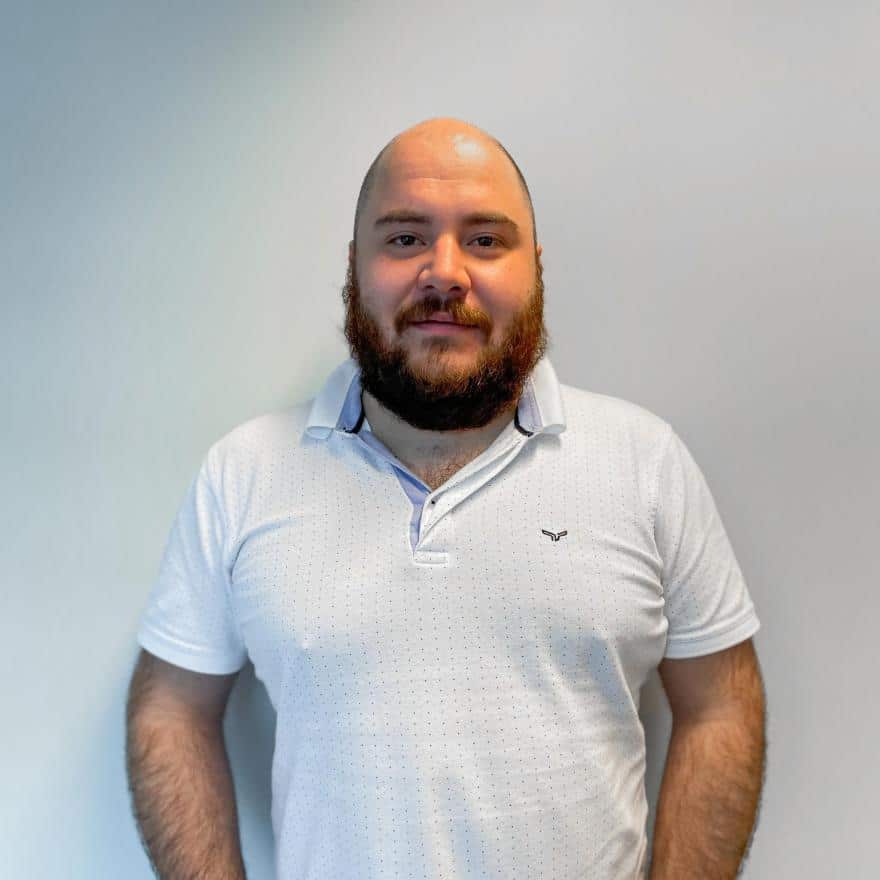
Deyan Genovski
Appolica
Deyan Genovski
Deyan Genovski is the CTO and co-founder of Appolica – a Bulgarian software development company with a focus on mobile app development. Deyan has over 10 years of experience in management and software development, mainly in mobile and cloud back-end. He deals with various issues – from technical and architectural point of view, to advising startups in choosing the right technology. His main driving force is curiosity and the desire to find the best solutions. In his spare time he likes to find answers to the question “How does this work?”.
Kotlin Multiplatform
Mobile apps have become very popular in the past 10 years and a lot of companies are developing mobile apps or even basing their business around the mobile applications. However there is more than one operating system that runs on mobile phones – the two mostly used ones are iOS and Android. This would typically require building two separate mobile applications. A number of frameworks have emerged with the aim to simplify the development and minimize the cost and burden of building two separate applications – such as ReactNative, Flutter and others, all of which have their pros and cons. Kotlin Multiplatform is an emerging new technology aiming to approach the mobile application development from a different angle. We will showcase what the technology is about and why we think it has a unique advantage in specific use cases compared to the other Multiplatform solutions.
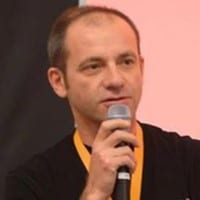
Nino Crudele
Hitachi
Nino Crudele
A hacker’s story: Dark Azure, how deep the rabbit hole goes
Nino spent the last six months focused on finding the most dangerous vulnerabilities and attack strategies against Microsoft Azure Technologies. In this unique 100% practical security session Nino will show the very dark side of advanced hacking techniques, and showing real unedited attacks to Azure Functions, App Services, AppFabric, Kubernetes, Web Jobs, Virtual Machines, BizTalk Server and more. Nino will also discuss fascinating points about some vulnerabilities he sees in cloud architecture, and he will provide his point of view to prevent this type of attack. It is a session for people to understand how hackers operate and how to protect from these very dangerous and effective attacks against serverless and Azure technologies.
Cloud vs Hackers, no holds barred.
In this session we will examine the most effective and dangerous attacks to the cloud, source code, scripts, protocols, configurations and more, no holds barred. We will see how a hacker thinks, creates his attacks and how he performs them. For each attack we will see the best defense and the prevention. A practical session full of invaluable information for every corporate asset and professional.
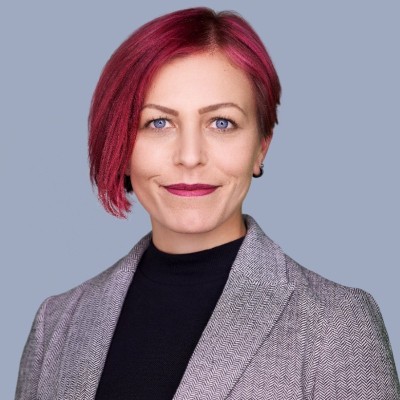
Tushka Dermendzhieva
Scalefocus
Tushka Dermendzhieva
My name is Tushka and I am a Java Engineering Manager at Scalefocus. My experience is mainly based on working on Java based projects. I have strong technical background mostly as a Java backend developer.
I am passionate about new technologies and mentoring. I am also interested in self-improvement and coaching topics.
I love traveling abroad, meeting new people and learning about other cultures.
Event-driven microservices
We are living in a world where modern applications are consistently moving towards microservice-based architecture. Thus, internal service communication is becoming a vital part of any system. Whenever we are not careful, our system can turn into a distributed monolith and this is the worst case. And of course every developer option when it comes to microservice communications is REST, we will go over event driven architecture as a solution and dive into the pros and cons of this popular architecture, some of the key design choices it entails, and common anti-patterns.
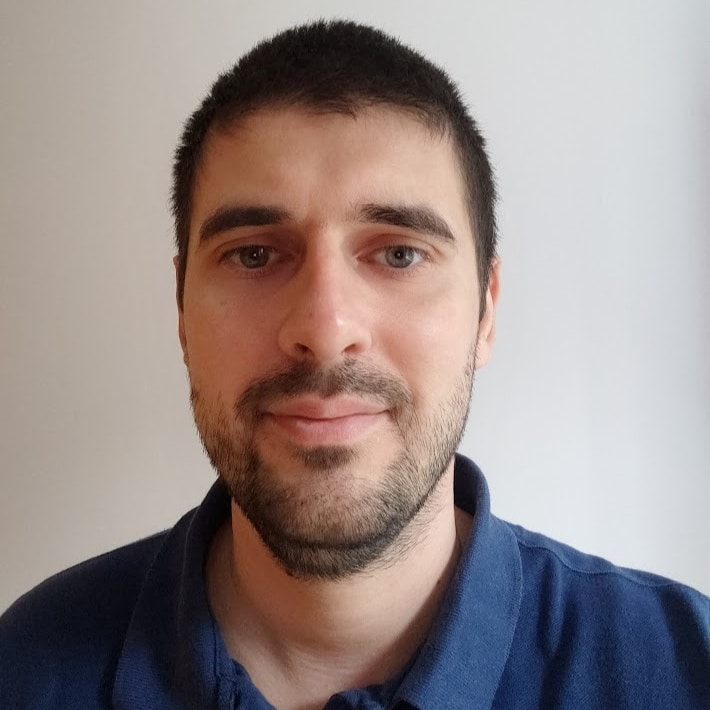
Ivan Kozhirug
Tide
Ivan Kozhirug
I’m a software engineer with more than 10 years of experience. I’m currently a Staff Software Engineer at Tide. I’m interested in Microservices, Event-Driven Architectures, DevOps and organizational scaling.
At Tide I’ve witnessed our engineering organization more than double in size in the past year, which allowed me to see first-hand what policies enable such rapid growth.
Before Tide I spent around 8 years working in the Gambling Industry. Software systems in that industry usually process millions of financial transactions per day, being subject to even higher peak loads during sporting events and certain holidays. This has allowed me to gain experience designing and developing Software that possesses the required Availability, Performance, Throughput, Observability, Scalability, etc.
Technical Excellence at Scale
The talk will focus on the importance of knowledge sharing for promoting Technical Excellence at Scale. This topic has always been relevant for bigger organizations, while smaller ones have usually relied on Tribal Knowledge. But in today’s world we often see successful start-ups experiencing rapid growth – starting with just a small team of engineers and ending up with hundreds of engineers in just a few years. Imagine your engineering team doubling or tripling in size in a year or just a few months and a few of your initial key engineers leaving during that same period. How do you handle that without sacrificing the quality of your Software Delivery? One of the keys is, you guessed it, organizational policies that enable effective and efficient knowledge sharing which in turn promotes Technical Excellence. This is crucial for scaling your organization successfully. At Tide we’ve seen our Engineering Team more than double in size in the past year. Based on our experiences I’ll discuss what we’ve learned about policies and practices that do NOT scale well and ones that DO scale well as the organization grows. The talk will try to answer the following questions:
- Why Tribal Knowledge doesn’t scale well?
- What is “The Bus Factor”?
- Why does your Organization need Software Engineering Principles?
- Why does your Organization need Guidelines?
- Why do you need to automate them?
- What is Chesterson’s principle?
- How to create documentation that would allow readers to understand decisions made years ago?
- What is LADR?
- How can you automate documentation creation? (Open API, Async API etc.)
- Why does your Organization need a structured process for onboarding new engineers?
- Why does your Organization need Induction Sessions?
- Why are Code Reviews important for Technical Excellence?
- Why does your Organization need a Service Catalogue? (Backstage etc.)
- How do you handle Deprecation?
- Why does your Organization need Interest Groups?

Milan Milanov
Halo DX
Milan Milanov
Workflow engines: The missing piece
With the prevalence of microservices, whole architectures are cut into smaller pieces that are loosely coupled. Useful business processes typically span more than one service, though. In this talk I will discuss what does this mean for your architecture and the role a workflow automation technology can play within it. We’ll discuss visibility/orchestration of cross-microservice flows, error monitoring, compensating transactions, and more.
DDD and JPA: Proceed with caution
Domain-driven design promotes the use of a rich domain model, as opposed to an anemic one. However, mapping potentially complex value objects, entities and aggregates to a relational database can be a challenge. In this talk we’ll see how this can be tackled with JPA, what are some problems and limitations of the approach, and discuss several alternatives.

Steve Poole
SonaType
Steve Poole
Developer Advocate, DevOps practitioner, Long time Java developer, leader and evangelist. I’ve been working on Java SDKs and JVMs at OpenJDK. Apache and Eclipse since Java was less than 1. Now working to enlighten and education developers on software safety in all its guises. A seasoned speaker and regular presenter at international conferences on technical and software engineering topics.
Practical steps for creating safer software (Code included)
The world runs on software: we all know that but so do the bad guys. Now, more than ever before, understanding your role in designing, building and deploying safer software is critical. In this session I’ll take you through the basics. Learn the three principles of software design specifically aimed at creating more secure and robust solutions. From code to deployment to production there are steps you can take to keep the cyber-attacks at arm’s length and reduce the impact when something bad happens. It’s not all the problem of the developer but we have a crucial part to play in tackling cybercrime. That needs us to understand how our actions help or hinder both the bad guys and the others involved in the software lifecycle. This session will show you a little of how attacks happen, what’s out there to help with the defences and how your coding and design approach can make things worse or, hopefully, so much better.
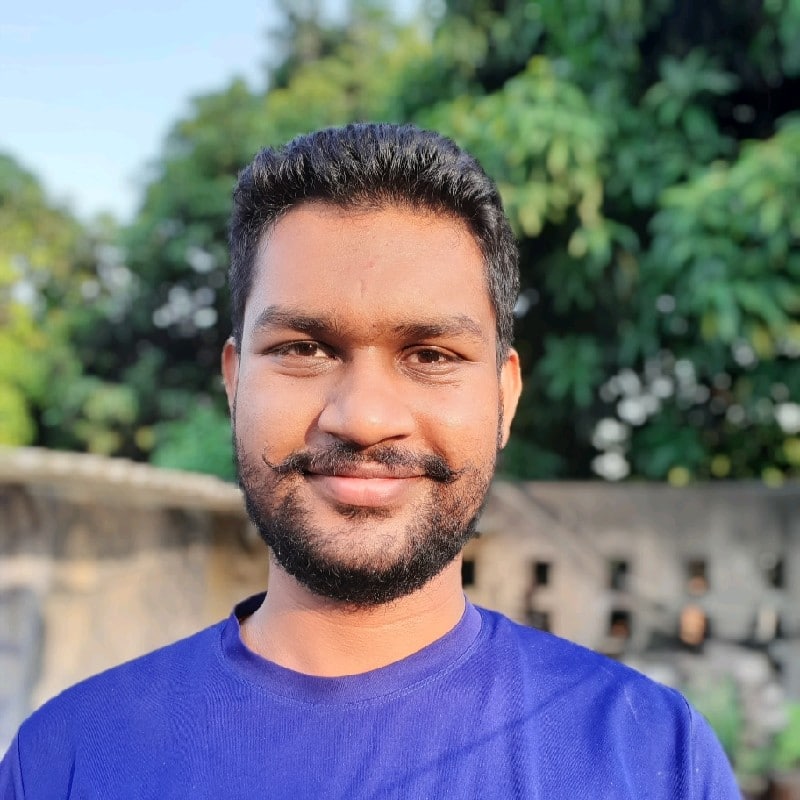
Abhishek Verma
Infosys
Abhishek Verma
Professional Java and Spring Trainer in Infosys since 2017. Have mentored 5000+ professionals. Certified in Oracle Java 11, 7 Azure certifications, 1 GCP certification, 3 Alibaba Cloud certification, 1 Aviatrix certification and a Microsoft Certified Trainer.

Atanas Kuzmanov
Schwarz IT Bulgaria
Atanas Kuzmanov
Hi, my name is Atanas, nice to meet you!
I am a passionate software engineer with over 10 years of experience.
Studied and graduated at the University of Essex.
Lived for 10 years in the United Kingdom, 5 of which I have worked for the BBC.
Have successfully led large-scale projects involving cross-domain collaboration over high performance critical applications with clients worldwide.
My capabilities and passion for technology constantly lead me on an interesting path with new and interesting discoveries.
Other interests include: Music, Travelling, Hot Wheels model cars and more…
API-first! Contract-first! Make API development great again!
In the current situation of increased remote working, having a common, easier to understand medium of communication such as an OpenAPI spec document is indispensable.
Things get exciting when this so-called OpenAPI spec document can help you build APIs and AUTOMATICALLY VALIDATE YOUR APIs! An OpenAPI spec document can also serve as a contract, generate clients, servers, documentation, and much more…
When this OpenAPI document can also:
- Put your developers, clients and client’s developers first!
- Have Automatic, Fail-fast, API Contract Validation!
- Be Cross-Platform and Language Agnostic!
- Generate clients, servers, and documentation from OpenAPI specs in a plethora of languages!
- Simplify communication by means of a common document in YAML or JSON!
- Speed up development, prototyping, R&D, etc.!
- Reduce costs! Using contract tests in conjunction with (or as a replacement for) traditional end-to-end integration tests will be cheaper in the long run.
… things get even more interesting in the demo…
Come at our talk and find out more!

Iva Abadjieva
Innovation Center Inc.
Iva Abadjieva
Discussion :: Women in Software Development Industry – Challenges, Career, Leadership
Opening

Iskren Chernev

Iskren Chernev
Iskren maintains backend infrastructure for millions of users for a messaging company, writing asynchronous code before it was cool. He’s also a maintainer of moment.js.
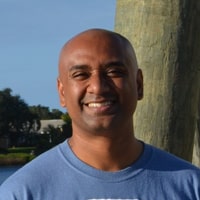
Reza Rahman
Microsoft
Reza Rahman
Reza Rahman is Principal Program Manager for Java on Azure at Microsoft. He works to make sure Java developers are first class citizens at Microsoft and Microsoft is a first class citizen of the Java ecosystem.
Reza has been an official Java technologist at Oracle. He is the author of the popular book EJB 3 in Action from Manning Publishing. Reza has long been a frequent speaker at Java User Groups and conferences worldwide including JavaOne and Devoxx. He has been the lead for the Java EE track at JavaOne as well as a JavaOne Rock Star Speaker award recipient. He was the program chair for the inaugural JakartaOne conference. Reza is an avid contributor to industry journals like JavaLobby/DZone and TheServerSide. He has been a member of the Java EE, EJB and JMS expert groups over the years. Reza implemented the EJB container for the Resin open source Java EE application server. He helps lead the Philadelphia Java User Group. Reza is proud to be a founding member of the Jakarta EE Ambassadors.
Reza has over a decade of experience with technology leadership, enterprise architecture and consulting. He has been working with Java EE technology since its inception, developing on almost every major application platform ranging from Tomcat to JBoss, GlassFish, WebSphere and WebLogic. Reza has developed enterprise systems for well-known companies like eBay, Motorola, Comcast, Nokia, Prudential, Guardian Life, USAA, Independence Blue Cross, Anthem, CapitalOne and AAA using Java EE and Spring. He is particularly interested in distributed systems, messaging, middleware, persistence and machine learning.
Reza is an inductee to Phi Beta Kappa, the oldest and most respected national honor society for undergraduates in liberal arts and sciences. He earned his bachelors degree from Gettysburg College. He graduated Summa Cum Laude with a double major in Computer Science and Economics as well as a minor in Mathematics.
Opening
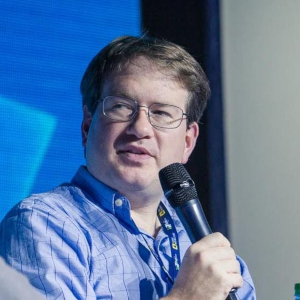
Ryan Cuprak
Dassault Systemes
Ryan Cuprak
Ryan Cuprak is an CPG & Retail, Formulation R&D Development Senior Manager at Dassault Systemes, co-author EJB in Action 2nd Edition from Manning and the NetBeans Certification Guide from McGrall-Hill. He is also president of the Connecticut Java Users Group since 2003. Ryan is a JavaOne Rockstar Presenter. At Dassault Systemes he works on the ENOVIA Enginuity chemical formulation software and is involved in desktop and backend server development as well as client data migrations. Prior to joining DS, Ryan worked for a distributed computing company, TurboWorx, and also Eastman Kodak’s Molecular imaging Systems group, now part of Burker. Ryan earned a BS in computer science and biology from Loyola University Chicago.
Fighting Classpath Chaos
Chaotic classpaths can be be source of constant unexpected problems in development and production. All too often everything including the kitchen sink is dumped onto the classpath to make an app work. Who has time to look or figure-out research conflicts or troubleshoot transient errors? In this session I cover some of the bizarre issues I’ve had to troubleshoot (in production!) along with tools I’ve created to to identify and resolve problems.
Jakarta EE 9 Impact
Jakarta EE 9 will have a major impact upon the Java ecosystem whether you directly use it or NOT. Do not assume you aren’t impacted! The change will have a ripple effect on many open source libraries and frameworks, including Spring! In this presentation I will cover what has changed and how to assess and mitigate its impact upon your application(s).
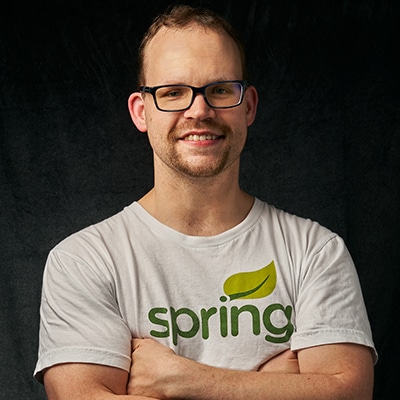
Josh Long
Spring
Josh Long
Josh (@starbuxman) has been the first Spring Developer Advocate since 2010. Josh is a Java Champion, author of 6 books (including O’Reilly’s “Cloud Native Java: Designing Resilient Systems with Spring Boot, Spring Cloud, and Cloud Foundry” and “Reactive Spring”) and numerous best-selling video training (including “Building Microservices with Spring Boot Livelessons” with Spring Boot co-founder Phil Webb), and an open-source contributor (Spring Boot, Spring Integration, Spring Cloud, Activiti and Vaadin, etc), a podcaster (“A Bootiful Podcast”) and a YouTuber.
Kubernetes Native Java
Spring is all about helping developers get to production quickly and safely. These days, “production” is all but guaranteed to mean Kubernetes, and Spring has you covered. Join me, Spring Developer Advocate Josh Long (@starbuxman), and we’ll look at how Spring Boot makes writing blisteringly fast, cloud-native, and scalable services more effortless than ever.
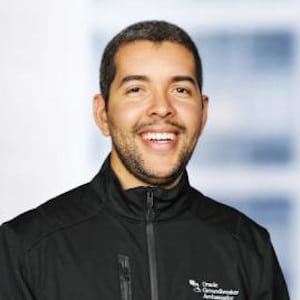
Otavio Goncalves de Santana
Zup Innovation
Otavio Goncalves de Santana
Otávio is a passionate software engineer focused on Java technology. He has experience mainly in persistence polyglot and high-performance applications in finances, social media, and e-commerce.
Otavio is a member of both Expert Groups and Expert Leader in several JSRs and JCP executive committee. He is working on several Apache and Eclipse Foundation projects such as Apache Tamaya, Eclipse JNoSQL, Eclipse MicroProfile, JakartaEE. A JUG leader and global speaker at JavaOne and Devoxx conferences. Otavio has received recognition for his OSS contributions such as the JCP Outstanding Award, Member of the year and innovative JSR, Duke’s Choice Award, and Java Champion Award, to name a few.
Framewars: the battle between NoSQL and Java in the cloud arena.
This lecture’s objective is to make comparisons between points and weaknesses of Java frameworks that integrate with databases. On the one hand, the NoSQL MongoDB, Redis, Neo4J, and Cassandra, and on the other, the Java frameworks that integrate with them: Spring, Quarkus, Jakarta EE, Micronaut. The arena: the cloud!
In this ring, the one who best analyzes each tool’s trade-offs wins, participates, and is the judge of this epic battle.
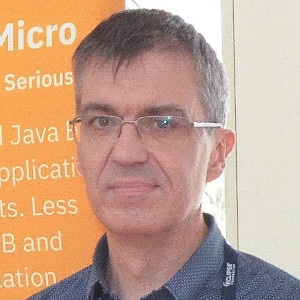
Rudy De Busscher
Payara Services
Rudy De Busscher
Rudy loves to create (web) applications with the Java EE platform and MicroProfile implementations and is currently working for Payara Services Limited in the Service Team. He helps customers, writes technical content, is part of some MicroProfile implementations and advocates the Payara Products in various ways.
He is active in the IT industry for more than 20 years and created many applications for customers. He is also a big fan of OpenSource and helped in various OpenSource projects like DeltaSpike, PrimeFaces, and Apache Myfaces. He is also passionate about Web Application Security using OAuth2, OpenID Connect, and JWT. He maintains the Octopus OpenSource project and is a member of the Jakarta EE Security API team.
7 Reasons to Switch to JDK 17 as a Jakarta EE Developer

Alvaro Muñoz
GitHub Security Lab
Alvaro Muñoz
Alvaro Muñoz works as Principal Security Researcher with GitHub Security Lab team. Previously he worked as an Application Security Consultant helping top enterprises to deploy their application security programs. He is passionate about Web Application security where he has focused most of his research. Muñoz has presented at many Security conferences including BlackHat, DEFCON, RSA, OWASP AppSec EU and US, JavaOne, etc, and holds several infosec certifications, including OSCP, GWAPT, and CISSP.
Rise of captain hindsight: Finding Log4Shell with CodeQL
CodeQL is a free and powerful static analysis tool to look for vulnerabilities in OSS projects. It is commonly used to detect known vulnerability patterns and their associated variants in code. CodeQL queries are usually aimed towards very specific vulnerabilities for variant analysis purposes and are often integrated into CI/CD pipelines to automatically detect bugs. For this reason, CodeQL is configured to operate in a developer-first mode which will reduce false positives to a minimum and return the most accurate results. However, CodeQL can also be configured to operate in a less conservative, more security researcher friendly mode which results in more false positives but also less false negatives.
In this talk, Alvaro Muñoz of the GitHub Security Lab will use Log4Shell to demonstrate CodeQL in action. He will review Log4Shell’s root cause, how it manifests in code and how it could have been discovered using CodeQL. In this process he will discuss some specific examples of what it means to operate on each of the above-mentioned modes and how someone could configure CodeQL to better serve their objectives, either as a security researcher or a developer.
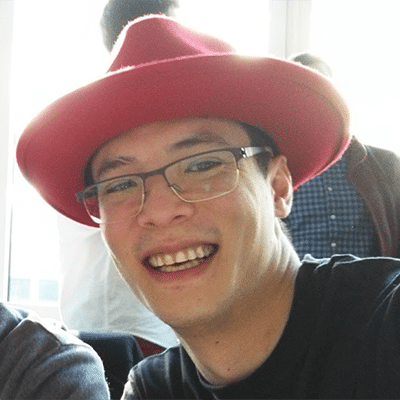
Sun Tan
Red Hat
Sun Tan
Sun is a Senior Software Engineer and a Java developer with over 17 years experience, currently working at Red Hat. Sun is involved in the Eclipse Che project from the very beginning as a core contributor. Sun has the community in his heart and is devoted to open source. He has been contributing to open source software while working for companies like Nuxeo, Serli and now Red Hat. Today, his adventure continues in sharing his source code, promoting great talks and speakers at his local Paris Java User Group, volunteering at Devoxx France, coding with Eclipse Che and enjoying his new hobby: brewing beer in his kitchen. Last but not least, Sun is behind the #CheJoy tweets: short videos showing great Eclipse Che features.
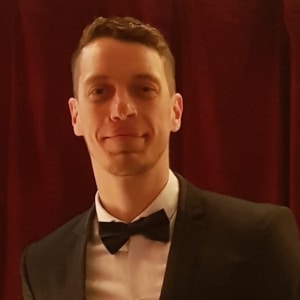
Andres Cespedes Morales
Mulesoft
Andres Cespedes Morales

Dmitry Alexandrov
Oracle
Dmitry Alexandrov
Dmitry is a software developer at Oracle, Java Champion, Oracle Groundbreaker. Currently working on Project Helidon. He has more than a decade experience mainly in Java Enterprise in banking/telecom, but interested in dynamic languages on JVM and features like massive computations on GPUs. A true believer in open source and community driven initiatives. He is a co-lead of the Bulgarian Java User Group and co-organizer of jPrime Conf.
Dmitry is a blogger and also a frequent speaker at local events as well as conferences like JavaOne/CodeOne, Devoxx/Voxxed and Joker/JPoint.
Helidon + Loom = let’s burn!!
Although Loom is still under development, the small and fast bird Helidon already supports full-fledged work with virtual threads out of the box! In this talk, we’ll take a closer look at how this is implemented in practice, and what a real speedup we get, compared to the reactive implementation (which is also amazingly fast)!

Werner Keil

Werner Keil
Werner Keil has worked for more than 26 years as project manager, software architect, analyst and consultant on leading-edge technologies for Banking, Insurance, Telco/Mobile, Media and Public sector.
Among his earlier clients are Sony where Werner designed and implemented micro-format based tags for Sony Music.
He develops enterprise systems using Java, Java EE, Oracle or IBM, does Web design and development using Adobe, Ajax/JavaScript or dynamic languages like Ruby, PHP, etc.
Besides work for major companies he runs his own creative, talent and consulting agency Creative Arts & Technologies. In his spare time, he runs and supports open-source projects, writes song lyrics, novels, screenplays and technical articles. He is committing member of Eclipse Foundation, Apache Foundation and the Java Community Process, including his role as JSR-363 Spec Lead and Executive Committee Member.
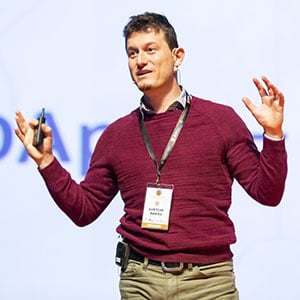
Svetlin Nakov
SoftUni
Svetlin Nakov
Svetlin Nakov (http://nakov.com) Svetlin Nakov has 20+ years of technical background as software engineer, project manager, consultant, trainer, and digital entrepreneur with rich technical experience (blockchain, Web development, information systems, databases, cryptography, C#, Java, JS, PHP, Python). Svetlin Nakov is a regular speaker at hundreds of conferences, seminars, courses and other trainings and holds a PhD degree in computer science. He is author of 15 books about computer programming and software technologies, lives in Sofia, Bulgaria and works as an passionate trainer and inspirer at SoftUni.
Starting Your First JOB in Software Industry – Tip & Tricks from Nakov
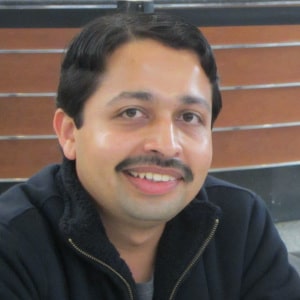
Naresha K

Naresha K
Naresha works as Technical Excellence Coach and Cloud Transformation Catalyst. He works with the developers to improve their professional practices to get better at developing maintainable applications that deliver business value. He also helps teams to architect solutions for the cloud and migrate applications to cloud platforms. He has been developing enterprise software for more than 12 years.
Naresha is the founder organizer of Bangalore Groovy User Group. He has been a speaker at several conferences including GR8 Conf EU, Functional Conf, GR8 Conf India, Grails Conf, GIDS, Eclipse Summit and Selenium Conf.
Evolving with Java – How to Remain Effective
Take Control of your Integration Testing with TestContainers
How easy is it to write and maintain integration tests when your system under test interacts with databases, message stores, and other external systems? It can be quite challenging, can’t it? For example, the lack of control over the setup of databases can increase the cost of integration testing. Sometimes we take the route of using an in-memory database instead of the one we employ in the production environment, making the tests less effective. With Docker containers, you can simplify this to some extent by running the setup before invoking your tests. Imagine if you get to control the database environment right from within the test code. TestContainers bring in this convenience.
TestContainers is a tool that you can invoke from your test code. It provides lightweight, throwaway instances of common databases, web browsers(Selenium tests), or anything else that can run in a Docker container. In this presentation, I walk you through how TestContainers is the most effective way to take advantage of Docker containers for integration testing. I present through several use-cases and demonstrate how TestContainers simplifies integration testing.
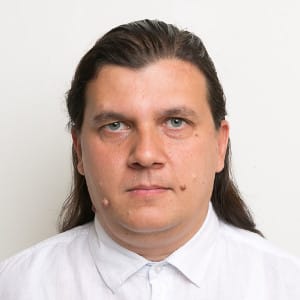
Dr. Pavlin Dobrev
Bosch.IO
Dr. Pavlin Dobrev
Dr. Pavlin Dobrev is a Director at Bosch.IO. The company owned by Bosch is focused on developing AI-powered Internet of Things (IoT) solutions focused on connected IoT ecosystem and tear down silos to create a truly connected world. He is charge for the Quality Management of the Bosch IoT Suite, the entire support of ISO 9001, ISO 20000 and ISO 27001 at Bosch.IO, as well as various research and customer projects.
Dr. Dobrev has more than two decades of experience with IoT, AI, Cloud and Java technologies, as well as in OSGi and embedded systems. He is an active participant in the OSGi Alliance, Java Community Process and other technical standards groups. He is a member of the Eclipse Foundation and participates in the development of the Eclipse IDE as a committer in the Equinox project.
Pavlin Dobrev has a PhD in Computer Systems in the area of Knowledge Management from the Institute for Parallel Processing, Bulgarian Academy of Sciences and holds an MsC in Computer Science from the Faculty of Mathematics and Informatics of Sofia University. He has written many scientific and technical publications and participated as speaker in prestigious international conferences.
Future vehicle will run on AIoT
“Once, software was a part of the car. Now, software determines the value of a car. The success of a car depends on its software much more than the mechanical side.” – Manfred Broy, TU Munich. Many car drivers expect their vehicles to be fully integrated into their digital lives. In addition, new connectivity, automation, and personalization features will be increasingly implemented with software in the future. While in the past the customer’s experience of a car was primarily defined by hardware, data and software is now taking on a much more important role. This trend of software massively shaping the customer experience and, in some cases, even the specification of the hardware is referred to as the “software-defined vehicle”.
This evolution not only affects development and operation, but also makes new business models that rely on emerging AI and IoT technologies. So new types of collaboration are possible. German auto industry top managers always proudly stated that they have “gas in their blood”. But do they have electricity and code in their blood?
In 2025 all Bosch products either possess intelligence themselves, or AI will have played a key role in their creation. It is intended business to be more data driven and digital analytics to be used as a base for many decisions.
I will dive into the reference architecture for software defined vehicle platform developed jointly with Microsoft. I fully support that the automotive and IT industries do not have to be competitors. More than ever, they will complement each other.
Opening

Irina Kamalova
REVOLUT
Irina Kamalova
Irina is an enthusiastic Backend Software Engineer with several years of experience. Her work history includes building software in a huge bank of Russia, at Yandex and currently, she’s working for Revolut. She delivered great releases and she’s always chasing how to impact the business in the most efficient way with her code contributions. She is also a strong advocate for a healthy and safe environment in the workplace. As a result, she became a Director of Women Who Code and outside of her job she’s mentoring people in improving their technical and personal skills to obtain the job of their dreams.
Discussion :: Women in Software Development Industry – Challenges, Career, Leadership

Nikolay Milovanov
ThingsLog
Nikolay Milovanov
Nikolay is a network freak and lazy software nerd ☺ He has a PhD from NBU in “IPv4 to IPv6 network transformation” and a specialization in Architectures for Software systems from Carnegie Mellon University. Through the years Nikolay has worked for many companies like Globul, D-Telecom, SevOne, Comptel, Nokia, Deloitte, BMW. In ThingsLog Nikolay is acting as a product owner and CEO.
LoRa network distributed network logging and monitoring
LoRa is an LPWAN radio technology that works in ISM radio spectrum. The spectrum is free for use but still regulated and each user has to follow certain rules.
In this talk Nikolay will present an independent solution for distributed IoT LoRa network monitoring and logging. The solution reveals the top talkers in certain area and provides a good idea of the state of the LoRa radio spectrum. Finally a live demo will be done based on real data feeds from Sofia, Bulgaria.
Introduction to LoRa and LPWAN
LoRa is a radio technology for sending short data messages over long distances with minimal energy consumption. In this talk Nikolay will do a short introduction to LoRa chirp modulation, LPWAN and LoRaWAN protocol, deployment options, network operator types and best practices.
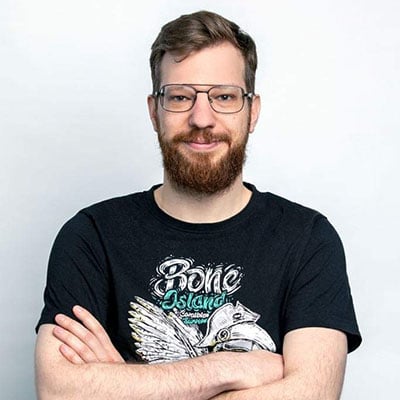
Jacek Bosiacki
DataArt
Jacek Bosiacki
Jacek has been working in the IT industry for 6 years. Starting from testing, he went through business analysis and until today, he develops his skills programming in Java. Along the way, he had short episodes in User Experience, and once trained people in databases and application execution processes in Java. After hours, he loves playing basketball, snowboarding and playing bridge. His real passion is West Coast Swing – an unusual, elegant dance.
How to write code efficiently?
Every time you switch from keyboard to mouse and back it takes several seconds. Nowadays IDEs provide possibility to avoid using mouse in almost every main function. I’d like to show you how to write code in IntelliJ with limiting mouse usage to minimum. Also, you will see how easily you can use IntelliJ to learn most of shortcuts just by coding.
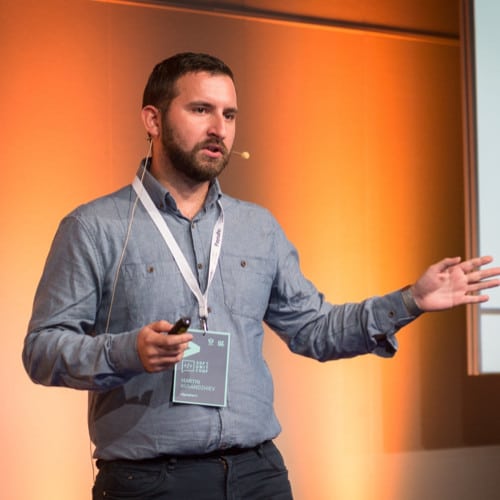
Martin Kuvandzhiev
GoStartups
Martin Kuvandzhiev
Martin Kuvandzhiev is an Engineer, Innovator and Entrepreneur. He starts working as Software developer at age of 18 right after finishing high school. Martin is the Founder of GoStartups, CEO of Assetify and board member of Bitcoin Gold. His companies are oriented in fintech, healthcare and blockchain. Despite the fact that Martin runs 2 companies he still does development and is specialized in iOS development. Martin has plenty of experience in creating products from scratch and that is the reason why his topic of development is specifically for that – creating a great app architecture from the beginning.
What’s new with Blockchain in 2022
Blockchain technology continues it’s vast growth and every single day new products gets release. In that session we will discuss what is the general direction of development of the technology and also will summarise the highlights from 2021 and 2022.
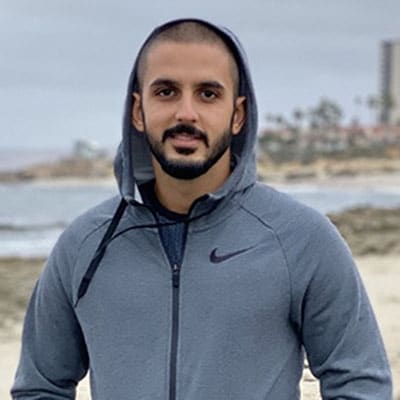
Boris Nikolov
GoStartups
Boris Nikolov
Boris is a software-development enthusiast and a strong state-of-the-art technologies advocate. Starting to show interest in software development in the early high-school years, Boris has spent a lot of his time exploring the different types of software in order to master all their strengths and weaknesses and be able to make the crucially important decisions inevitable during every product development life cycle. This way he is able to ensure the future-proof architecture and scalability of all developed products under his leadership. Boris is currently the leading technologist in GoStartups and specializes in Android and Back-end development.
Creating the right Android application structure for future-proof development

Trayan Iliev
IPT
Trayan Iliev
Trayan Iliev (https://www.linkedin.com/in/trayaniliev/) is developer of end-to-end reactive full-stack applications and services using ES, TypeScript, Angular, React and Vue.js clients, and Spring, Java EE, Reactor, Kafka, Golang, Flask, and Express back-ends. He has 15+ years of software development experience and 12+ years experience as enterprise IT trainer. Trayan is CTO of IPT – Intellectual Products & Technologies – training and consultancy company, focused on novelties in front-end and REST/gRPC/GraphQL backend development – reactive UI, end-to-end reactive programming, distributed event stream processing, distributed machine learning, and real-time micro-service architectures. Trayan has presentations on local developer conferences such as Java2Days, Voxxed Days, jPrime, jProfessionals, BGOUG, on topics like Spring 5, Reactor, SOA & REST, Kafka, Pulsar, Java EE, React, Angular, Ionic, Express.js, RxJS, reactive robotics and IoT. He is robotics/smart-things/ IoT enthusiast and organizes RoboLearn hackathons in Sofia.
Making Machine Learning Easy with H2O and Spring
Machine learning is becoming a must for many business domains and applications. H2O is a best-of-breed, open source, distributed machine learning library written in Java. The presentation shows how to create and train different type of supervised and unsupervised machine learning models easily using H2O Flow web interface – including Deep Learning Neural Networks, Automatic Machine Learning AutoML), Distributed Random Forest (DRF), Generalized Linear Model (GLM), Gradient Boosting Machine (GBM), XGBoost, Principal Component Analysis (PCA), Generalized Low Rank Models (GLRM), Word2Vec among the many. The session finishes with a demo showing how to incorporate some of the trained models in a real-time streaming web service implemented using Spring 5 Web Flux and Spring Boot.


